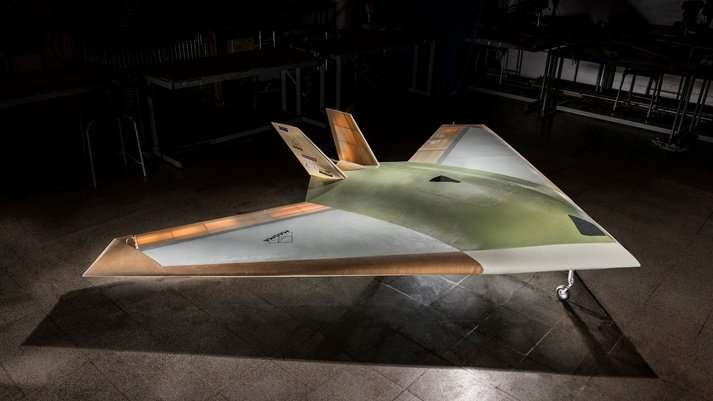(Tech Xplore)—BAE Systems and Manchester University announced completion and success of its first flight trial of the unmanned aerial vehicle, MAGMA. Further flight trials are planned for the coming months to demonstrate the flight control technologies.
With MAGMA's successful completion of the initial trials, said The Engineer, "Efforts toward flapless flight have taken off."
This UAV will use a blown-air system to maneuver the aircraft. Reports say this could pave the way for future designs.
The flight trials are part of an ongoing project. It involves the two organizations and wider long-term collaboration between industry, academia and government, said the company release.
The buzz is mostly fixed on MAGMA's control system, whereby mechanical 'flaps' have been dropped in favor of another approach. Namely, two technologies using the jet-powered UAV, MAGMA, are:
Wing Circulation Control takes air from the aircraft engine and blows it supersonically through the trailing edge of the wing to provide control for the aircraft.
Fluidic Thrust Vectoring uses blown air to deflect the exhaust, allowing for the direction of the aircraft to be changed.
Design features could translate into greater control, reduced weight, and stealthier aircraft. Ben Coxworth, New Atlas, commented on the control function: "Instead of ailerons, the MAGMA's wings have a series of very narrow slots along their trailing edges. Some of the exhaust air is diverted from the engine, and exits those slots at supersonic speed. Utilizing this setup, it's possible to control the UAV's roll simply by controlling how much air is blown out of which wing at what time."
Brian Oldfield, BAE Systems, said MAGMA is a 4m wingspan vehicle weighing 40kg in its conventional control state but will weigh 45kg when modified to have flow control devices integrated into it, according to The Engineer.
Bill Crowther, leader of the MAGMA project at University of Manchester, said the project goal was to develop a large model scale flying demonstrator for novel aerospace technologies relevant to next generation low observable aircraft.
The U.S. Air Force has an explanation of what is meant by the phrase "low observable" aircraft.
"Advances in technology allow us to carry out aircraft missions without being detected, but it takes a skilled human touch to ensure the technology is properly in place. It's the job of Low Observable Aircraft Structural Maintenance specialists to design, fabricate and modify unique metals and bonded materials that create the stealth effect. From first application to repairing structural damage, these experts make sure aircraft can continually complete their missions completely undetected."
What's next?
According to Brian Oldfield, wrote The Engineer, the next steps for MAGMA are to fly and (1) understand the effectiveness of the trailing edge and fluidic thrust vectoring devices, and (2) understand whether control surfaces, such as the fin, could be reduced in size or removed.
The ultimate goal: flying the aircraft without any moving control surfaces or fins, if successful, would mark "the first ever use of such circulation control in flight on a gas turbine aircraft and from a single engine."
More information: www.baesystems.com/en/article/ … -magma-flight-trials
© 2017 Tech Xplore























